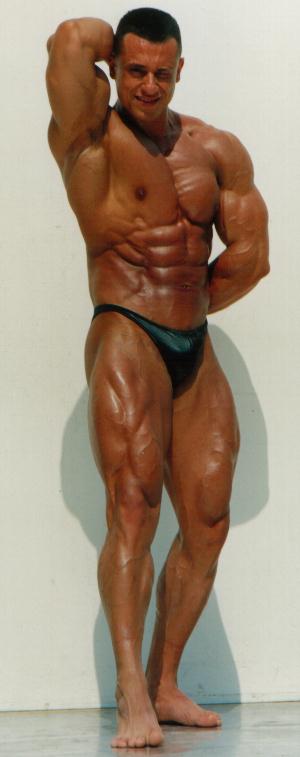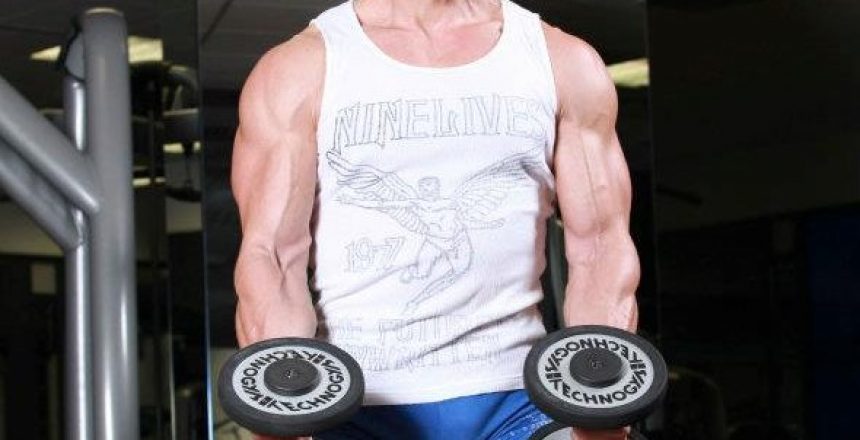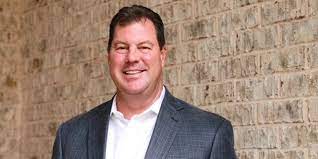Enrico Dell’olio is an Italian bodybuilder and trainer who teaches and trains in the high-intensity tradition of the late Mike Mentzer.
He is the author of three books: Protocollo Ibrido (Hybrid Protocol), La Dieta Fasica (Phasic Diet), and L’intensità Applicata alla Scienza dell’esercizio (Intensity Applied to the Science of Exercise), all of which you can download free from his website.

Enrico’s bio is here (in Italian).
We connected via our mutual friend Pieter Christiaens, who first urged me to take a look at high-intensity training and who has trained with Enrico. Here we discuss the nature of high-intensity training, why it’s a better method than conventional training, and how Enrico uses it for himself and for trainees.














13 Comments
Excellent Interview, as usual. From both of you!
I would love to know more about:
1. The mentioned eating protocol with alternating high carb and low protein and low carb and high protein meals for this way of training and
2. Since I am a hardgainer myself: The reduced capacity of a hardgainer to build muscle and how it affects his need for recovery, Enrico mentioned.
Best Regards from Germany
René
Thanks, René. Enrico’s book on diet is at the link I posted, although it’s in Italian. Enrico was a great interview subject, I agree. He’s completely on top of the science behind high-intensity training, besides being a great speaker.
Yeah, I always knew that there will be a time in my life, where I regret learning French in school instead of Italian 🙂
Great interview guys – very impressive for a first interview in English Enrico! What can I say, I agree with everything that was said here and I follow pretty much the exact same protocol as you Dennis: twice per week, 30 minute sessions. The only addition which you may find useful: until 3 months ago I was doing the classic Body By Science HIT ‘single set to failure’ approach over 8-10 reps and had pretty much stagnated. I then listened to some of Borge Fagerli’s podcasts with regard to the rest-pause technique he pioneered named ‘myo-reps’. This involves going for 15-18 reps to failure, and then taking 3-5 breaths and doing another 3-5 sets of 3-5 reps. Just as he said it would, this completely re-invigorated my progress, whilst still keeping the full-body session to around the 30 minute mark. I can’t see myself going back to single set to failure now…
And might I add that whilst ‘Rogue Health’ is my go-to site for cutting edge nutrition and lifestyle developments, I also regularly visit ‘Corporate Warrior’ https://www.15minutecorporatewarrior.com for all things relating to HIT training. Lawrence who runs that site is a great interviewer and has podcasts with pretty much everyone who is well-known in the HIT arena – so for any fans of HIT, I would highly advise subscribing to this site.
Thanks again guys for a great interview!
Hey Rob,
I just read through the comments section in Dennis’s review of Mike Mentzer’s Book two years ago and found some comments of you. Just curious how your actual Training these days look? You mentioned a 2-day Split. How is it divided and with what movements? The whole HIT concept looks very interesting to me and I am considering a switch, too.
Regards from Germany
René
Hi Rene, Well, I have been playing around with HIT over the last 3 years, continually tweaking it to best suit my requirements, so if you are interested this is just what I have found works best for me: Just as Enrico mentioned, I have limited time available, so like Dennis I need my sessions to be no longer than 30-40 minutes tops, twice per week. That means that intensity necessarily has to be very high. The ‘single set to momentary muscle failure’ approach doesn’t seem to be enough stimulus for me (although for many others it works just fine), hence why I do the ‘myo-reps’ approach now as I outlined above.
My basic routine is pretty similar each time (always full-body now): barbell standing military press for shoulders, bodyweight single-leg pistol squats for legs, dumbbell chest press, chin-ups, crunches with weight plates, dorsal raises, isometric neck contractions. You can see demonstrations of those exercises on YouTube if you are not familiar with them. Each set done in the myo-reps approach – takes me about 40 minutes in total. I workout alone from home, so this is very quick to set up and dismantle as well as being very safe. In my eyes it is the most ‘bang for your buck’ you can get – at least that I have discovered so far! Hope that helps..
Thanks for your answer, Rob! I will orient myself at your workout and tweek it a bit for my taste (my legs are my weakness, so more focus there). Looking forward to this way of training
(off-topic)
Somebody whose annoyance level from vegans hit a critical limit made two anti-vegan videos
from excerpts of pro-vegan videos.
If you have nothing better to watch while drinking your next coffee or tea those might be worth a look:
https://www.youtube.com/watch?v=EFF30jfTubU [Embed]
https://www.youtube.com/watch?v=1HwBtRlyxPs [Remove]
3rd part (was deleted before due to copy right claim)
https://www.youtube.com/watch?v=7ThcTNit330
(off-topic)
A timely comment:
Summertime, when it’s very hot, is an opportune time for body-fat-shredding alternate-day or multiple-day fasting.
High heat is much more endurable when I am well into a fast (at least 24h).
People who have to endure the high temperatures and eat calories tend to sweat profusely;
especially after meals, but also generally.
High-heat summer weeks are perhaps the best time to start fasting, just for the fact that one stays more functional despite oppressive heat than everybody else; the transient hunger pangs every couple of hours are much more easily to endure than the ever-present hotness.
Agreed with this! Fasting tends to slightly lower your body temperature, and does make a noticeable difference with regards to heat tolerance.
By contrast, fasting in the winter can be pretty unpleasant — you really feel the cold then. Winter’s a better time for hitting the weights and then loading up with some calories.
(off-topic)
I happened upon this little study (n=2) which now is almost 100 years old looking experimentally into a meat-only diet.
No negative effects during and after one year were observed,
the subjects’ energy and health levels were completely normal.
https://www.jbc.org/content/87/3/651.full.pdf+html
He definitely puts a lot of effort in his routine.